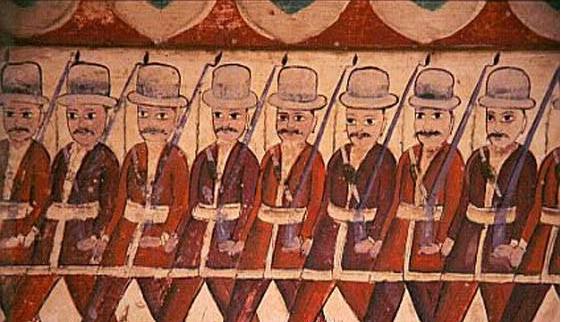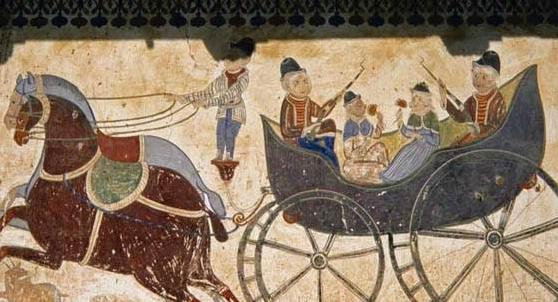In Rajasthan Shekhawati comes across as a repository of rare art forms. This exquisite art form has remained trapped to its origin and has succeeded in becoming one of the major tourist attractions. Havelis and Mahals in Shekhawati boast of extremely beautiful wall and ceiling paintings. Many of them depict the lost traditions where as some of them clearly portray the advancement of society.

Jhunjhunu in Shekhawati region typically is famous for its grand Havelis. Jhunjhunu was founded by Kayamkhani Navabs around 15th century. It was ruled by them till it was taken over by the Rajput ruler Sardul Singh in 1730 AD. He ruled the town successfully till independence. Mohanlal Ishwardas Modi haveli counts among one of the most exquisite and sought after havelis of Jhunjhunu. It is particularly famous for its Lord Krishna paintings.
History:
Mohanlal Ishwardas Modi Haveli was built by Mohanlal Ishwardas in late 19th century. He was a wealthy and eminent merchant of Jhunjhunu. Touring of this haveli gives quite a fair idea of the effort and expenditure that has gone in the designing and embellishment of this building. Shekhawati region in whole has been home to many such affluent traders who made considerable wealth after the facilitation of transport system by the British. The well connected transport system impaired these traders with feasible options of frequent trading in their hometowns.
Jhunjhunu has many such havelis which were used as residence by these businessmen. Mohanlal Ishwardas Haveli also happens to be one of them. These havelis were constructed with the special motive of accommodating their huge and widespread families as well as signifying their wealth and prosperity.
Haveli Architecture:
Mohanlal Ishwardas Haveli is one of the major tourist spot is Jhunjhunu. The fine art form and Lord Krishna Depiction has been able to catch the attention of visitors over years now. This Haveli lies on the north side of the Nehru Bazaar. It was constructed somewhere in 1896 and is famous for its rare and beautiful wall paintings. Haveli opens to a massive wooden carved gate. The huge wooden gate has an opening into a courtyard which then opens into smaller courtyard. The smaller courtyard is surrounded by several rooms and verandahs.
Wall Paintings:
Mohanlal Ishwardas Modi Haveli has wall paintings famous for portraying the life and past time of Lord Krishna. These paintings are extremely descriptive and exhibit praiseworthy craftsmanship of Shekhawati region during late 18th century.

Some of these frescos show Lord Krishna stealing butter. Some of these show him hiding away the clothes of Gopis while they are bathing in the river. In this picture Krishna can be seen hiding away on a tree with Gopi’s saree around him. The depiction of Lord Krishna’s leela is the most popular murals of Rajasthan. Artists have taken special plunge in painting havelis with these frescos of Krishna in various vibrant colors and moods. In the front facade of Mohanlal Ishwardas Modi haveli you would be able to see the inevitable train, which depicts the up gradation of modern inputs of art. Just adjacent, on a smaller arch a British imperial figure can be seen. This includes monarch and judges in royal robes. On the opposite side of this arch the paintings of Indian rulers and Nawab can be seen. Apart from these frescos there are also some fine mirror and glass tile work. Interestingly, in the inner courtyard one can witness the hierarchy of the living beings in form of paintings. In this hierarchy idols can be seen in the upper most bands, human beings in the middle and animals along with flowers in the bottom band.
Mohanlal Ishwardas Modi haveli runs the story of lost talents and precious art forms. It is surely counted among Jhunjhunu’s most sought after and most visited havelis. If exploring Shekhawati region, then apart from Rani Sati Mandir, the havelis of Jhunjhunu undoubtedly offer a beautiful treat to all tourists which should not be missed.

Leave a Reply